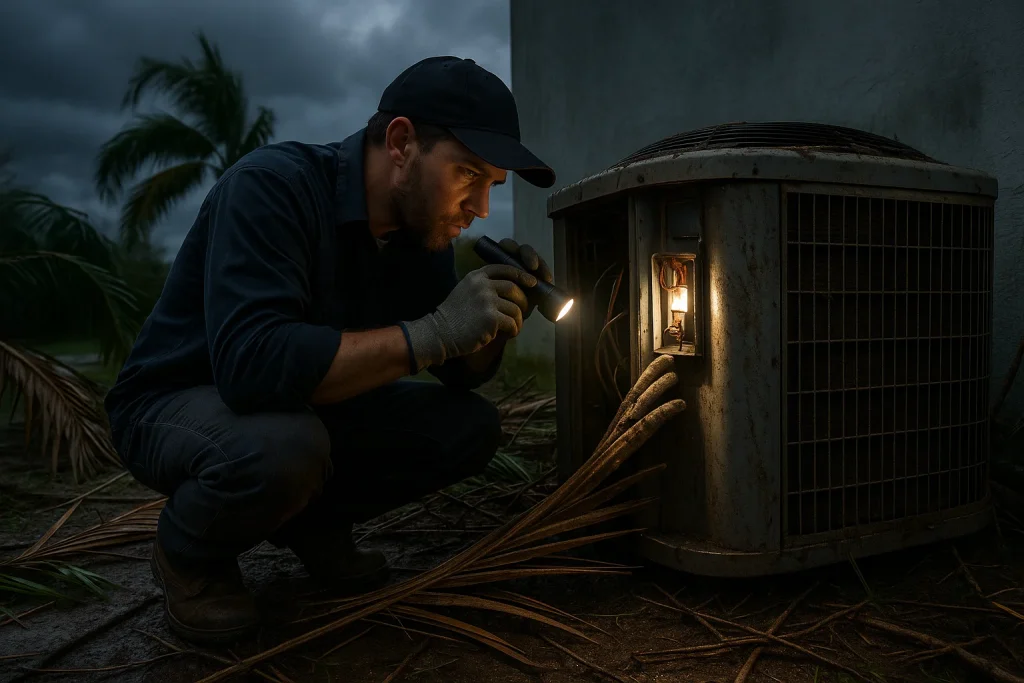Every year, Florida homeowners brace for the reality of tropical storms and hurricanes. High winds, heavy rain, and power surges can also seriously impact your home’s HVAC system. Preparing ahead of time helps protect your investment, reduces costly repairs, and ensures your HVAC system is ready to keep your home warm after the storm passes. Here are the key steps to take before and after a storm to prepare your HVAC system for strong winds and rain.

Steps to Take Before the Storm Hits
When a storm is on the horizon, preparation is your best defense. Your HVAC system is one of your home’s most expensive and essential components, and a few proactive steps can make a big difference.
1. Turn Off the Power
Before a storm makes landfall, switch off your HVAC system at the breaker. This helps protect your system from power surges and prevents further damage if flooding occurs.
2. Protect the Outdoor Unit
High winds can turn even lightweight debris into dangerous projectiles. Use hurricane straps or tie-downs to keep your outdoor AC unit firmly in place. A breathable, weather-resistant cover can shield your outdoor unit from debris. Avoid fully wrapping the unit in plastic or anything that traps moisture, as this can cause corrosion.
3. Clear the Area Around the Unit
Remove outdoor furniture, planters, and other objects that could become airborne. A clear perimeter helps reduce the risk of impact damage.
What to Do After the Storm Passes
Once the storm has cleared and it’s safe to go outside, it’s important to assess your system carefully before turning it back on.
1. Visually Inspect the Outdoor Unit
Look for any signs of damage, such as dents, debris, or flooding around the base of the unit. Standing water can damage electrical components and the compressor.
2. Remove Obstructions Safely
Clear away branches, leaves, or other storm debris that may be blocking airflow. Do not use the system if anything appears damaged.
3. Check for Electrical Issues
Storms often bring power surges. If you notice exposed wires, tripped breakers, or anything unusual, do not attempt to restart the system. Call a professional immediately.
4. Call Bayonet for a Post-Storm Inspection
Even if everything looks fine, internal damage isn’t always visible. Our team can check refrigerant lines, wiring, and drainage to ensure your system is safe to operate and won’t sustain additional damage when it powers back up. If your AC smells like vinegar in Zephyrhills, this could be a sign of mold or a blocked condensation pan in the system.
Stay Prepared With Bayonet Plumbing, Heating & Air Conditioning
Tropical storms and hurricanes are an unavoidable part of life in Florida, but the damage they cause to your HVAC system doesn’t have to be. By taking smart steps before and after a storm, and partnering with trusted professionals, you can protect your home’s comfort and safety.
It’s No Sweat: Call Bayonet! Contact Bayonet Plumbing, Heating & Air Conditioning to schedule an AC inspection in Zephyrhills, FL today!

